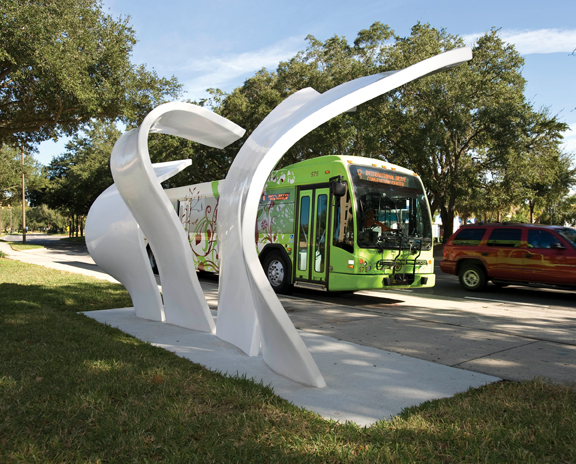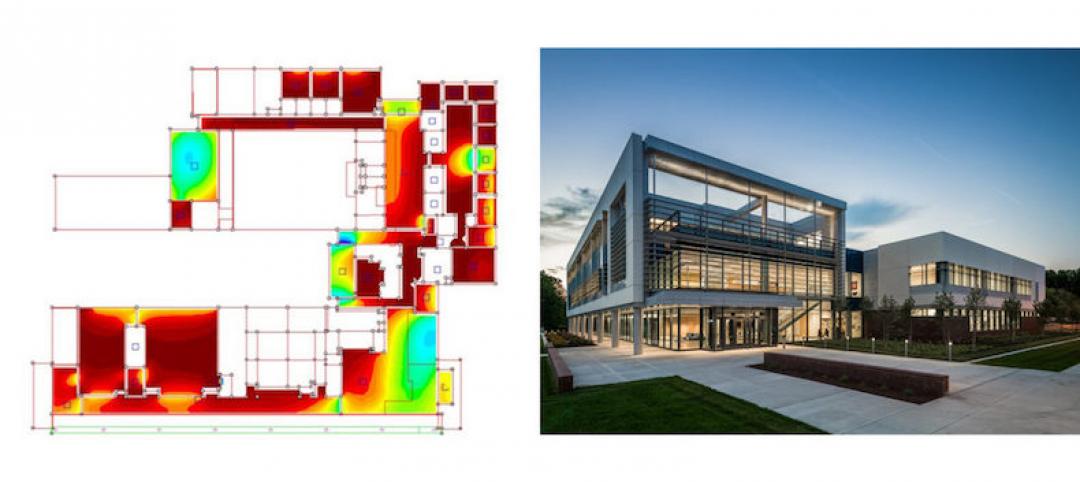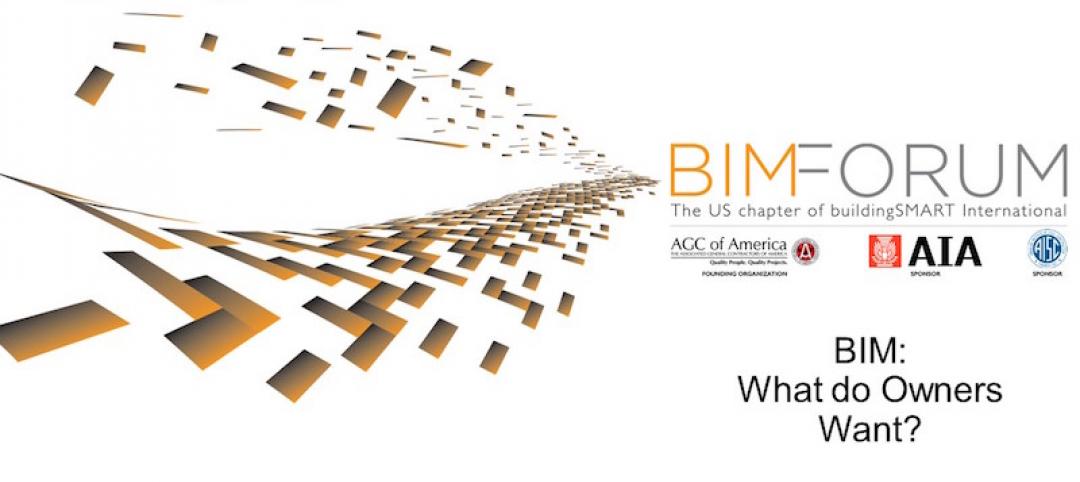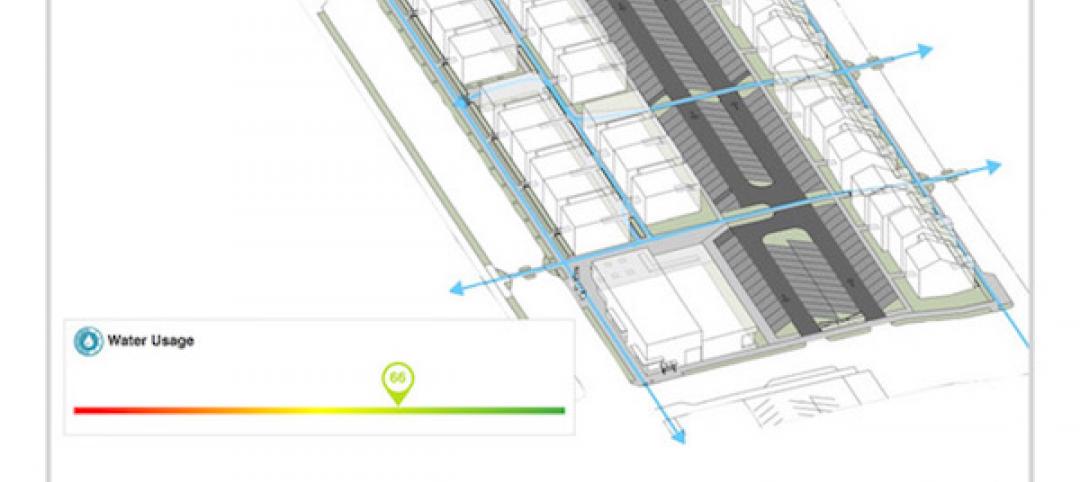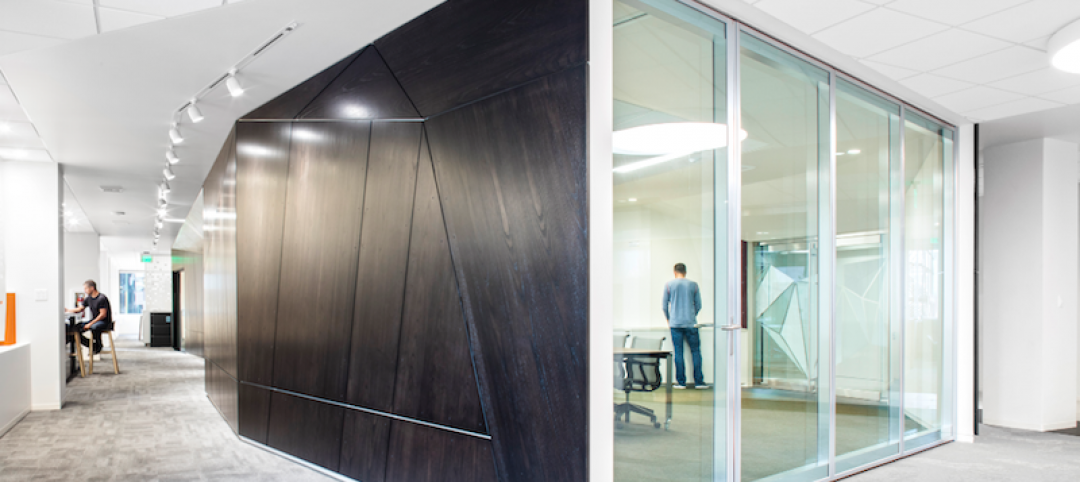ART SHELTERS
In Orlando, sculpture can be found in unexpected places
Public transit users in Orlando, Fla., can now wait for the bus in style. Entech Creative Industries, Walt Geiger Studios, and LYNX (Central Florida Regional Transportation Authority) have adorned four sites along International Drive with “art shelters,” concrete art installations that serve as bus shelters. The art forms are constructed of Entech EG 21 Series Formable Composite Panel. Artist Walt Geiger calls the shelters his “Cascade” collection. The largest includes five structures; the tallest reaches about 12 feet in height. The new shelters bring art to public spaces for bus riders who may never have the opportunity to go to art museums.
 WATER FILLING STATION
WATER FILLING STATION
Tap, tap, tap: Bottle-filling station saves on plastic waste
In 2010, total annual global bottled water consumption measured 8.75 billion gallons; the average American consumed 28.3 gallons of bottled water a year, according to the Bottled Water Association. Elkay’s EZH20 rapid bottle-filling station reduces the waste from manufacturing and disposing of plastic bottles. The filling station can be retrofitted to work with an existing water cooler or installed as a new unit. Its Green Ticker is a built-in visual mechanism that tracks the number of 16-ounce water bottles diverted from landfills. Recent applications: university campuses, airport terminals, and corporate campuses.
 SNAP-AND-GO TILES
SNAP-AND-GO TILES
Modular tiles turn boring office spaces into dynamic work areas
Working within a tight budget with not enough to invest in office décor? Ditto, from 3form, can help enliven any workspace without breaking the bank. Ditto is a modular product that uses cross-shaped pieces that snap together to create customizable partitions, wall features, and art pieces. An online configuration tool helps you design your own creations. Kits come with all the required hardware.
The snap-and-go pieces feature the high design flexibility of 3form’s Varia Ecoresin, a 40% pre-consumer recycled content with color, organic, sheer fabric, and resin properties.
 DECORATIVE GRASS
DECORATIVE GRASS
Move over, chia pet! Now it’s maintenance-free indoor grass
U.K-based media agency Curb has introduced urban greenery that needs no soil and can be used indoors. DesignGrass is 100% natural grass that can be made into any shape, pattern, image, brand, or word, from wallpapers and logos to temporary or permanent displays. It can be installed on indoor surfaces such as walls and ceilings. Once installed, it requires no watering or trimming.
The grass is being used to create green spaces in commercial or residential buildings for architectural or interior design purposes, and could be used for grass furniture, lights, and lampshades, according to Curb.
 OPEN TECHNOLOGY DATA PLATFORM
OPEN TECHNOLOGY DATA PLATFORM
Building management brought to you by the cloud
Occasionally, a more efficient approach to building also is more affordable for owners and operators seeking to achieve better building performance. Panoptix, by Johnson Controls, is an open technology platform that makes it easy for owners to collect and manage data from a wide variety of building systems and other data sources, such as meter and weather data. It provides a suite of cloud-hosted building efficiency applications that work with any building management system currently available to owners. Online and phone support, as well as onsite building and energy services, enables customers to implement operational improvements and energy-saving measures. There’s also an online connected community of peers and experts with whom to share best practices, ideas, and resources.
 SOLAR-POWERED PICNIC TABLE
SOLAR-POWERED PICNIC TABLE
Students can charge their electronic gadgets in the great outdoors of Washington, D.C.
Six students from the Catholic University of America in Washington, D.C., developed a solar-powered picnic table capable of charging laptops, cell phones, tablets, and other electronic devices. The design team included mechanical engineering graduate student Joseph Cochrane and five architecture and sustainable design graduate students: Lindsay Dickes, Michael Doster, Cory Estep, John Lang, and Monica Perez. Escaping the stuffy confines of the university library, students may now use the solar-powered outlets to charge laptops while studying for exams outdoors.
 ELECTRO-CONDUCTIVE WALLBOARD
ELECTRO-CONDUCTIVE WALLBOARD
Low-voltage surface lets you plug in your electronics anywhere in the room
What if, instead of plugging your electronics into an outlet, you could just plug them directly into the wall, anywhere in the room? That’s what the Electro-Conductive Gypsum Wallboard lets you do. A low-voltage surface on a gypsum board makes powering appliances convenient and cost-effective. Electrified wallboards consolidate direct current transformers, while a flexible conductive surface eliminates the need for utility power strips. The wallboard, by Eric Olson of Superficial Studio, utilizes a proprietary conductive thin-film matrix with high-efficiency, nonmagnetic transformers.
 SOLAR CARPORT
SOLAR CARPORT
Charging station can juice up to 13 vehicles a day
The 100 kW-hour solar carport was the result of a partnership between GE Energy Industrial Solutions and Inovateus Solar. The solar carport can generate enough energy to offset the power needed to charge up to 13 vehicles a day using six electric vehicle charging stations. The carport can also generate enough energy to power overhead lighting in the parking lot.
The solar carports are expected to pop up at universities, office buildings, and sports complexes around the country in 2012.
 LIGHTWEIGHT WALLBOARD
LIGHTWEIGHT WALLBOARD
15-30% lighter gypsum boards save lugging on the job
USG’s new Firecode 30 panel, a 5/8-inch board for nonrated and 30-minute fire-rated partitions, is up to 30% lighter than competitive panels. The company’s Firecode X panel is a 5/8-inch gypsum panel that weighs up to 15% less than competitive boards, meets ASTM C1396, and is listed for use in more than 130 UL fire-rated assemblies. According to the manufacturer, the lightweight panels score and snap easily, while also offering a high strength-to-weight ratio and improved sag resistance.
 ELECTRIC PAVING TILES
ELECTRIC PAVING TILES
Produce electricity just by walking on these pavers
Every footstep can be used to generate clean electric power. That’s the premise behind Laurence Kemball-Cook’s paving tiles, which he developed at England’s Loughborough University.
Each tile’s surface is made of recycled truck tires and a base of recycled polymer concrete. A footstep depresses the rubber surface by 1/5 of an inch, and the kinetic energy is then converted into electricity that can be stored, used immediately, or transmitted to a grid. According to Kemball-Cook, the energy generated during the day from about 10 tiles could power a streetlight all night long. The tiles can be used to retrofit existing flooring for both indoor and outdoor applications. BD+C
Related Stories
| May 24, 2017
Accelerate Live! talk: Applying machine learning to building design, Daniel Davis, WeWork
Daniel Davis offers a glimpse into the world at WeWork, and how his team is rethinking workplace design with the help of machine learning tools.
| May 24, 2017
Accelerate Live! talk: Learning from Silicon Valley - Using SaaS to automate AEC, Sean Parham, Aditazz
Sean Parham shares how Aditazz is shaking up the traditional design and construction approaches by applying lessons from the tech world.
| May 24, 2017
Accelerate Live! talk: The data-driven future for AEC, Nathan Miller, Proving Ground
In this 15-minute talk at BD+C’s Accelerate Live! (May 11, 2017, Chicago), Nathan Miller presents his vision of a data-driven future for the business of design.
Big Data | May 24, 2017
Data literacy: Your data-driven advantage starts with your people
All too often, the narrative of what it takes to be ‘data-driven’ focuses on methods for collecting, synthesizing, and visualizing data.
AEC Tech | May 23, 2017
A funny thing may happen on the way to AI
As AI proves safe, big business will want to reduce overhead.
Building Technology | May 5, 2017
Tips for designing and building with bathroom pods
Advancements in building technology and ongoing concerns about labor shortages make prefabrication options such as bathrooms pods primed for an awakening.
BIM and Information Technology | Apr 24, 2017
Reconciling design energy models with real world results
Clark Nexsen’s Brian Turner explores the benefits and challenges of energy modeling and discusses how design firms can implement standards for the highest possible accuracy.
BIM and Information Technology | Apr 17, 2017
BIM: What do owners want?
Now more than ever, owners are becoming extremely focused on leveraging BIM to deliver their projects.
Sustainable Design and Construction | Apr 5, 2017
A new app brings precision to designing a building for higher performance
PlanIt Impact's sustainability scoring is based on myriad government and research data.
BIM and Information Technology | Mar 28, 2017
Digital tools accelerated the design and renovation of one contractor’s new office building
One shortcut: sending shop drawings created from laser scans directly to a wood panel fabricator.


